It took just over a year for the management team at Argentum Silver (ASL-V) to decide whether it would go all the way with the Coyote project — a land package here in Mexico’s Jalisco state it optioned from Soltoro (SOL-V) in early 2011 — and the answer was a resounding “yes.”
Clinching the decision were drill intercepts of 1,470 grams silver per tonne over 4 metres; 180 grams silver over 2.8 metres; 312 grams silver over 3 metres; and 438 grams silver over 5.3 metres in the first-phase, 2,700-metre drill program, in which 20 of 25 holes at 80-metre depths from surface struck mineralization.
Coyote is 180 km east from the beach resort town of Puerto Vallarta and 140 km southwest (or a three-and-a-half-hour drive) from the state capital Guadalajara.
CEO Warren McIntyre is convinced there is more to be found at Coyote, where artisanal miners worked the historic El Tajo mine prior to the Mexican civil war. The Coyote property lies in the San Miguel de la Sierra mining district, where over 100 historic workings and prospects were explored and partially developed through the early 1900s, although production only extracted material with bonanza-grade silver above the water table.
“If we went hiking in these hills right now, I’m sure we’d find tons of old workings that have never been touched,” McIntyre said during a tour of the property. “There is so much more to explore and so much that hasn’t been touched . . . Canadian and American companies that come in here are cherry-picking the easiest ones, at this point . . . The most exciting thing for us is that we’re getting good early results. We’ve only drilled 400 linear metres of an identified 6,000-metre vein system, so the potential for growth is obvious.”
Jamie Levy, a veteran of the mine-finance industry who participated in the property tour, describes Argentum as one of the best new high-grade silver companies that he has seen in some time, and one with a low market capitalization of just under $7 million, to boot.
“Argentum achieved significant silver-gold results in its first round of drilling at Coyote that mirrored Endeavour Silver’s drill results at San Sebastian to the north,” Levy says. “The first round of stepout holes at El Tajo look very promising, and lead me to believe the company’s short time frame in acquiring its 100% interest was a very sensible decision in a market that seems to only care about well-mineralized precious metal intercepts that could quickly lead to mineable cash flow. At current grades, it would take very little tonnage to justify a silver mine.”
The Coyote property contains dozens of individual low-sulphidation epithermal silver-gold veins and stockworks, with vein widths ranging from 1 metre to 5 metres. So far the company has identified seven veins that stretch over a cumulative strike length of 6 km. Most of the mineralization occurs within a 1.5 by 2.6 km area.
The most attractive vein identified so far is El Tajo, which trends northeast and is traceable for 700 metres at surface. (There are two underground workings on the El Tajo vein.) The northwest-trending La Colorada vein is traceable for 300 metres at surface, and the northwest-trending La Florida vein is traceable for 400 metres at surface. Other veins at Coyote include El Tajo Norte, San Rafael, Valenciana and Bocancha.
Christina McCarthy, a geologist and mining specialist at Euro Pacific Canada in Toronto, has made two visits to the Coyote property already this year. She says that while Argentum is an early stage company with a small market cap — a tough place to be in the current market — the upside is that the project is located in a silver district with historic production of both silver and gold.
“The El Tajo vein alone may have the potential for about thirty million ounces of silver,” she pens in an email, adding that the project has “exceptional infrastructure, with well-built roads, access to water and high-voltage power running through the property — a tremendous upside.”
Argentum launched the second phase of its drill program at Coyote in September. The $500,000 program includes stepout drilling to test the extent of the high-grade mineralization on the El Tajo vein, as well as orientation drilling on the La Colorada vein. Sixteen holes are planned for a total drill program of 2,000 metres, with a possibility for more holes, based on early results.
McIntyre jokes that he was advised by some not to keep drilling this year given the financial climate, but that this only encouraged him to follow his instincts. “I came out here to do this program because everyone told us: ‘save your capital and don’t do anything,’” he says with a grin. “As soon as they said that, I said: ‘Let’s do something.’ That is kind of an indicator that the market has bottomed, and now they’re just living on fear. And so as markets are turning and commodity prices go up, we’ll have something to talk about.”
McIntyre plans to have Argentum end the year with $2 million in the bank, and likes to describe the company’s pace as “measured.” He says that “we’re not running, we’re walking, and we’re walking methodically . . . we’ve got a plan, and the plan is to keep moving forward without blowing our brains out, and expecting that these results will send the stock to $1 — and that we’ll be able to finance. That’s not reality. Reality is to tell the story and walk the stock up, and in my opinion, the stock market doesn’t lie. You are at a price because that’s what the market bears, and that’s what you’re worth. Will we need capital? I think we’ll probably need to look in 2013 for cash or a strategic partner.”
By many accounts, that won’t be too difficult if Argentum receives the same results as its initial drill campaign. “The first drill program had some sexy numbers, and this program will be a little more focused on showing continuity and grade, and also scouting around in some other areas that could develop later,” the company’s senior geological consultant and vice-president of exploration Paul Cowley says at Huakan International Mining in Vancouver. “The project is early stage, but it’s showing good possibilities of a bigger system that collectively could really mean something.”
Soltoro CEO Andrew Thomson, who joined Argentum’s board in September, says the Coyote project “is demonstrating what we would consider to be a small Mexican mine,” and notes that the secret is to build more tonnage and attract more serious investment.
“It’s quite a big system . . . there are six kilometres of veining,” he says. “It is an area where the prospectors and previous owners really worked only the surface material, and it hasn’t been drilled below the water table.”
Not only does Coyote exhibit high silver grades, Thomson continues, but it also has a nice gold credit and good base-metal credits. “We’re dealing with kilo-material silver — almost one gram gold and two percent to three percent lead-zinc — so it could be a robust system, in the sense that these are the sorts of equivalencies that actually make sense, as opposed to some of the lower-grade equivalencies that we’ve been seeing in the marketplace.”
Soltoro owns about 15% of Argentum’s 46 million shares outstanding.
When asked what he thinks the endgame might be for Coyote, McIntyre says he wants to keep the company’s options open, but believes the project can be sold if it’s a marketable asset. But if the project doesn&rsq
uo;t get big enough, fast enough, it could be worthwhile for Argentum to launch a small mining operation there, handling between 100 and 150 tonnes a day.
“I’ve got the spreadsheets out to see what it would look like in terms of capital expenditure,” he explains. “If we can keep it under ten million dollars, what would our internal rate of return be? . . . You don’t want to go to bed with someone who handcuffs you financially or exploration-wise, and we want to make sure we have a partner that takes advantage of this potential asset.”
In the meantime, McIntyre is scouting for more ground in the area with the help of Don Miguel, a 70-year-old local prospector who has been prospecting in the region since he was 14.
“He commands an amazing amount of respect, and we use him as a bird dog,” McIntyre says. “I put him on full-time because he is a huge asset to us.”
In addition to acquiring 100% of the Coyote project from Soltoro in August, Argentum also picked up 100% of Soltoro’s Victoria project, 120 km east of Puerto Vallarta and 140 km southwest of Guadalajara, where it is mapping and sampling to evaluate drill targets. Victoria is home to the historic Lupita mine, and Argentum is weighing the idea of opening up a new adit that would give its geologists underground access.
Soltoro has a 3% net smelter return royalty on both the Coyote and Victoria properties.
Outside Jalisco, Argentum purchased 100% stakes in the Lachiguiri and Silacayoapan properties in the Mexican state of Oaxaca from Arco Resources (ARR-V) in May.
At press time Argentum was trading at 12.5¢, within a 52-week band of 7¢ to 34¢.
The Vancouver-based junior’s institutional shareholders include Pinetree Capital (PNP-T), with 28%; Sprott Asset Management, with 18%; and Mackie Research, with 10%.

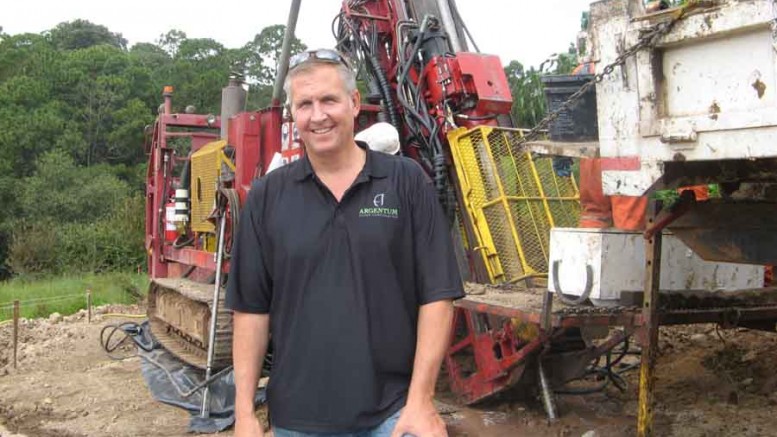
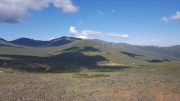
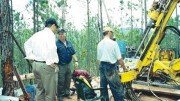
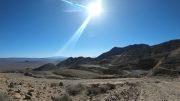
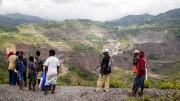
Be the first to comment on "Argentum Silver: No regrets, Coyote"